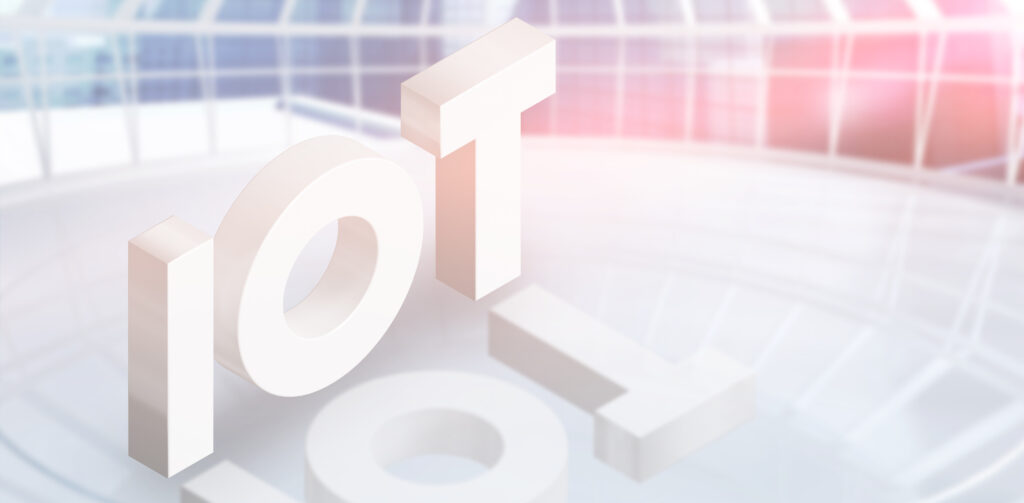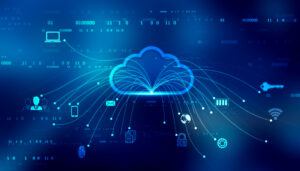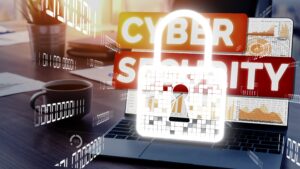With the rapid development of the Internet of Things (IoT), we arrive at the forefront of leveraging connected devices to optimize industrial processes. There is an immense potential for networked sensors and data analytics to drive efficiencies, reduce costs, and increase productivity. One example is Sofar Ocean Technologies. Their devices for ocean monitoring, providing real-time data for various industries, highlight the power of IoT in industrial applications. This article explores key use cases, implementation challenges, and best practices to integrate IoT into operations. These insights will position one to capitalize on IoT and gain a competitive edge. With an understanding of the technology and strategic approach outlined here, implement IoT solutions that deliver robust capabilities and accelerate the organization’s digital transformation.
Overview of IoT in Industrial Applications
Monitoring and Optimizing Industrial Operations
- IoT devices are being used in factories and industrial environments to monitor operations and optimize processes. Sensors gather data on variables like temperature, pressure, flow rate, and vibration to detect inefficiencies and prevent issues. This allows companies to save time, reduce waste, and improve quality. For example, IoT sensors can detect if a piece of equipment needs maintenance before it breaks down.
Automating and Controlling Industrial Equipment
- In industrial settings, IoT devices are used to automate and remotely control equipment. Actuators and controllers can adjust valves, start/stop motors, open/close switches, and more based on data from sensors or inputs from users. This reduces the need for human intervention and allows for precise control and synchronization of industrial equipment.
Tracking Assets and Inventory
- IoT devices like RFID tags, barcodes, and GPS trackers are used to monitor the location and status of industrial assets and inventory. Companies can track the movement and condition of raw materials, equipment, products, and more in real-time. This gives supply chain managers greater visibility and helps optimize logistics and scheduling. For example, sensors can detect if a shipment of materials is too hot or cold and alert someone right away.
Enhancing Safety
- In dangerous industrial environments like factories, construction sites, and mines, IoT devices help enhance safety. Sensors can detect hazardous conditions like gas leaks, fires, chemical spills, or structural instability and immediately alert workers. Wearable IoT devices can also monitor the health metrics of workers like body temperature, heart rate, and exposure to toxic gases. This allows companies to respond quickly in emergencies and proactively address safety risks.
Generating Data for Analytics
- The data gathered by IoT devices in industrial settings can be analyzed to gain valuable insights and make better business decisions. By identifying patterns and trends in the data, companies can optimize processes, reduce costs, improve quality, enhance productivity, and ultimately increase profits. Big data analytics will become increasingly important as more industrial IoT devices come online.
Key Benefits of Using IoT Devices for Industry
Improved Operational Efficiency
- IoT devices provide real-time data that allows for optimized resource utilization and process streamlining. By monitoring assets and environmental factors 24/7, companies can identify inefficiencies and make data-driven decisions to improve operations. For example, sensors can detect when machinery requires maintenance, allowing companies to schedule servicing at optimal times to minimize downtime.
Enhanced Data Collection and Analytics
- IoT devices generate huge amounts of data that would be impossible to collect manually. This data can be analyzed to uncover hidden patterns and insights that drive better strategic planning and decision-making. For instance, an ocean monitoring company analyzes data from sensors to identify how temperature changes affect the migration of fish stocks and then provides recommendations to commercial fishing companies.
Increased Safety and Risk Management
- In hazardous environments like chemical plants, mines, or oil rigs, IoT devices can detect dangerous conditions to help avoid accidents and save lives. Sensors monitor for risks like gas leaks, equipment malfunctions, or structural weaknesses. Alerts are triggered automatically if pre-set safety thresholds are crossed, allowing companies to respond rapidly. Some industrial companies even use IoT systems with AI to predict failures before they happen.
Improved Customer Experiences
- For companies that provide industrial equipment or services, IoT devices offer opportunities to improve the customer experience. By monitoring assets in real time, companies can ensure optimal performance and availability. Predictive maintenance reduces unscheduled downtime, and companies can spot potential issues to resolve them proactively before customers are impacted. Data-driven insights also help companies develop new features and services tailored to customers’ needs. Overall, the use of IoT leads to higher quality, reliability, and satisfaction.
In summary, IoT devices provide industrial companies with a multitude of benefits through real-time data collection, analysis, and monitoring. With IoT, businesses can streamline operations, uncover data-driven insights, strengthen risk management, and improve the customer experience. The end result is a safer, more efficient, and more strategic organization.
Real-World Examples of IoT in Manufacturing, Energy, and Transportation
Manufacturing
- IoT devices are transforming manufacturing operations through predictive maintenance and automation. For example, General Electric implemented IoT sensors and software in its Brilliant Factory initiative. The connected systems track parts, processes, and products in real-time, enabling data-driven optimizations that have reduced costs and improved efficiency. Automaker Audi uses IoT and AI in its factories to manage autonomous mobile robots that handle material transport and logistics. Intelligent systems have increased productivity by over 30 percent.
Energy
- In the energy sector, IoT technologies are enabling smart grids, connected infrastructure, and optimized resource usage. For instance, Shell employs IoT sensors, drones, and satellite data to monitor wells, pipelines, and refineries. The data-driven insights improve safety, cut emissions, and reduce operational expenses. Utility company Enel Group has connected over 2.7 million smart meters in Italy to better forecast demand, balance the grid, and give customers more control over their energy usage. The smart meter rollout has cut the company’s operational costs by over €100 million annually.
Transportation
- IoT is transforming transportation systems through connected vehicles, intelligent traffic management, and smart infrastructure. Companies like DHL, UPS, and FedEx use IoT sensors and software to optimize fleet routing, monitor shipments in real-time, and improve delivery efficiency. City traffic authorities employ IoT technologies such as connected traffic lights, smart parking systems, and congestion pricing to reduce traffic and emissions. For example, Moscow’s intelligent traffic management system has cut average travel times in the city by 20-30 percent. Connected vehicle services also leverage IoT, as with Tesla’s advanced autopilot and over-the-air software updates.
The rapid adoption of IoT in industries such as manufacturing, energy, and transportation demonstrates the huge potential for data-driven optimization, automation, and connectivity. As costs decline and technologies mature, IoT will transform operations, business models, and the global economy.
Challenges and Considerations When Implementing Industrial IoT
Security and Data Privacy
- When implementing IIoT, it is crucial to ensure the security and privacy of sensitive data. IIoT devices collect and transmit massive amounts of data, and if compromised, this can pose risks to intellectual property and operational insights. Companies should implement security best practices like data encryption, user authentication, and network segmentation. They must also comply with data privacy regulations to protect personal information.
Interoperability and Integration
- For IIoT to provide maximum value, devices and software from various vendors need to seamlessly integrate and share data. However, a lack of standardization can make interoperability difficult. Companies should consider using open standards and common frameworks to enable connectivity across the IIoT ecosystem. They should also implement an integration platform to consolidate and analyze data from diverse sources.
Cost and Complexity
- While IIoT promises significant benefits, implementing and managing an IIoT solution can be expensive and complicated. Companies need to invest in sensors, networking equipment, cloud platforms, and data analytics tools. They also require technical skills to architect, deploy, and maintain IIoT systems. Organizations should start small by launching pilot projects to optimize costs and complexity before large-scale rollouts. They can also leverage partnerships with technology companies to access skills and resources.
Legacy Infrastructure
- For companies with existing operational technology, transitioning to IIoT may require upgrading or replacing legacy infrastructure. Retrofitting or migrating legacy systems can slow down IIoT adoption and reduce potential benefits. However, ripping and replacing entire infrastructure is often not feasible. Companies should assess their current systems to determine compatibility with IIoT. Where possible, they should build on existing technology through incremental improvements to optimize investments while maximizing value.
In summary, while IIoT offers substantial opportunities, organizations must carefully evaluate challenges around security, interoperability, costs, complexity, and legacy infrastructure. With proper planning and risk mitigation strategies, companies can overcome these obstacles and reap the significant rewards of IIoT.
The Future of IoT in Industrial Applications

Increased Automation and Productivity
- The implementation of IoT in industrial settings will continue to drive greater automation of processes and increased productivity. With the ability to collect and analyze data in real-time from connected devices, industrial companies can optimize performance, predict maintenance needs, and minimize downtime. Connected sensors provide constant monitoring and alerts if equipment needs service. Robots and automated systems can also adjust parameters based on sensor data to maximize output.
Enhanced Safety and Risk Management
- Connected devices provide awareness of the conditions of industrial environments, equipment, and products. This allows companies to better monitor for risks, dangerous conditions, and quality issues. Sensors can detect factors like extreme temperatures, vibration, leaks, and other issues that pose risks. Connected systems also provide data to help manage risks, allowing companies to predict and mitigate potential safety hazards or quality problems.
Improved Customer Experiences
- The data and connectivity provided by IoT also allow industrial companies to enhance the customer experience. Connected products give companies data on how customers are using their products and services. This data helps companies make improvements, provide predictive maintenance, and offer upgrades to provide the best experience for customers. IoT also allows for new services to be offered, such as monitoring and data analytics for customers.
The future of IoT in industrial applications is promising, with many companies investing heavily in connected systems and data platforms to gain a competitive advantage. While there are risks and challenges to address in implementation, the benefits of greater automation, productivity, risk management, and customer experiences will drive IoT adoption for years to come. Companies that effectively leverage the power of IoT data will thrive in the increasingly connected industrial world.
Key Takeaways
IoT has enormous potential to transform industrial operations through real-time data and insights. As you implement IoT solutions, focus on clear ROI and seamless integration. Prioritize security from the start and keep capabilities scalable. With the right strategy and partnerships, IoT can take your business to the next level through optimized processes, informed decision-making, and new service offerings. The future is here. Take steps today to leverage IoT and position your company for long-term success in the digital landscape.
More Stories
Nokia Powers Next-Gen PON and Wi-Fi 7 Evolution
With the introduction of their co-existence network solution, advanced Wi-Fi 7 gateways, and a high-density 25G PON line card, Nokia empowers operators to meet the increasing demand for robust, high-capacity networks.
Nordic’s nRF9151 Powers Japan’s IoT Future with NTT DOCOMO LTE-M Certification
With the recent LTE-M certification of Nordic’s nRF9151 System-in-Package (SiP), witness a transformation in cellular IoT deployment across various industries.
Perplexity Labs: Transforming Prompts into Dynamic Reports and Dashboards
As a professional in today’s fast-changing digital world, you need tools that go beyond traditional limitations. That’s where Perplexity Labs comes in—an innovative feature from Perplexity AI, available only to Pro subscribers. It turns your creative prompts into detailed reports, interactive dashboards, spreadsheets, and even full web applications.
Instagram Edits Empowers Creators with Pro-Level Mobile Video Tools
Instagram unveiled Edits, their groundbreaking mobile video editing app designed to elevate the quality of Reels and short-form videos to empower creators.
GCT Semiconductor and Giesecke+Devrient partner to launch eSIM solution for IoT devices
GCT contributes advanced semiconductor technology. Meanwhile, G+D brings strong expertise in embedded SIM (eSIM) and remote SIM provisioning.
Apple Trims Features to Fast-Track Smart Home Hub Amid Siri AI Delays
At the core of these delays is the sluggish advancement in Siri AI enhancements, pivotal to the hub’s operation.


